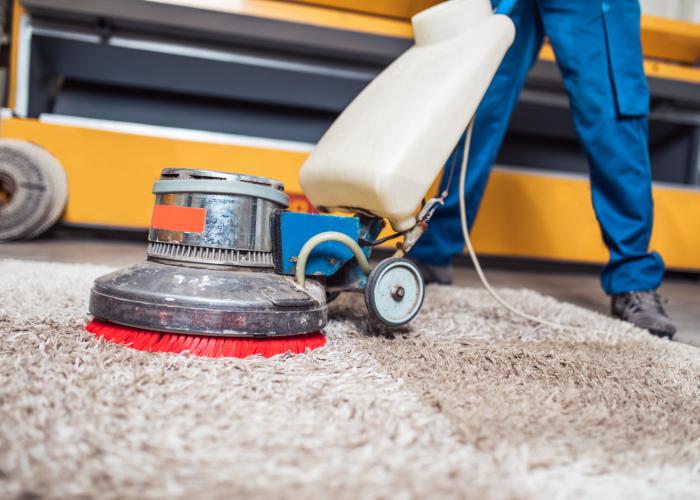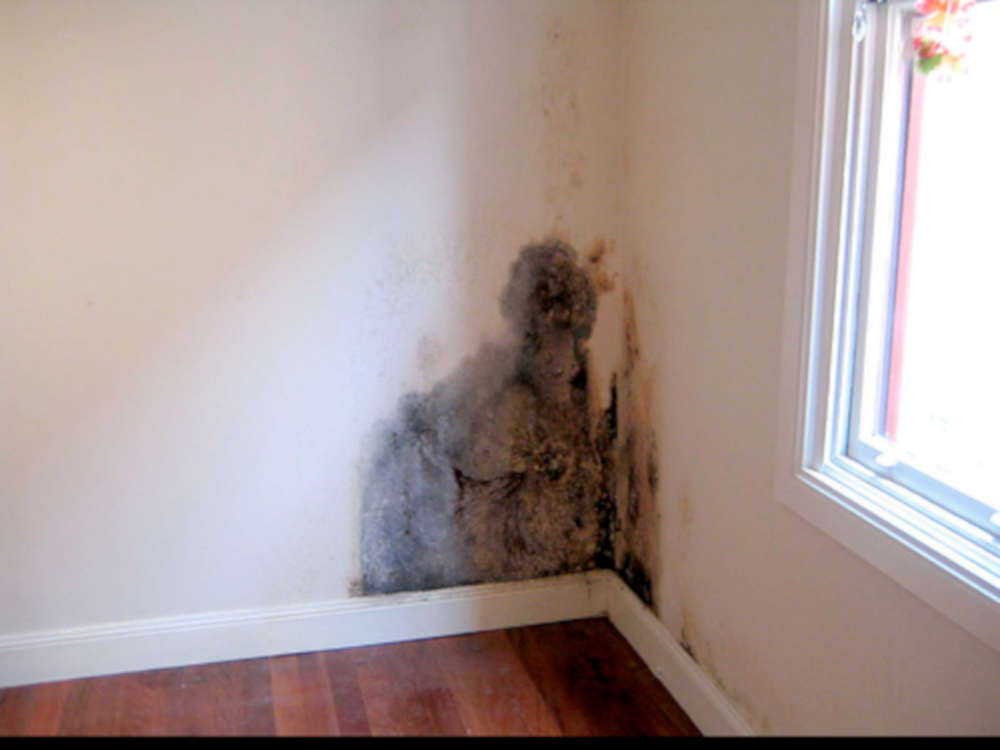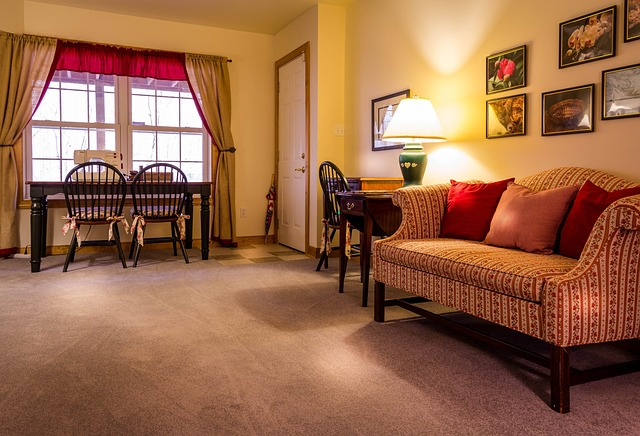Is Carpet Mold Dangerous?

Our friends at Southington Carpet Cleaners wrote an awesome article answering the question: Is Carpet Mold Dangerous? You can find the full article HERE.
Homeowners often wonder, is carpet mold dangerous? This is a fair question, as not all mold in a home means health risks. On the other hand, it’s shortsighted to overlook potential dangers of a moldy or mildewed carpet! This includes dangers to your health and the risk of damage to a home’s subflooring and other building materials.
Additionally, it’s helpful to consider how to avoid carpet mold, mildew, and similar issues in the first place. In some cases, a carpet cleaning contractor can’t restore severely molded or otherwise filthy carpets. In turn, keeping carpets clean can mean not having to replace them as often over the years. With that in mind, check out some vital tips for ensuring a clean, pristine carpet under foot.
Is Carpet Mold Dangerous?
The short answer is yes, carpet mold is often dangerous for a room’s occupants. Of course, just how dangerous depends on mold levels, fresh air circulation in the space, and similar factors. In other words, small amounts of carpet mold in a room with lots of fresh air probably isn’t dangerous!
On the other hand, even moderate mold levels can mean risk factors and become dangerous and damaging. Also, remember that mold spreads quickly and easily along damp spaces, such as carpet backing. This is especially true in spaces with little ventilation. Check out some added details of how and why moldy carpets are dangerous to your home:
Mold and allergic reactions
Many people find excessive mold bothersome, but it’s especially dangerous to anyone with allergic reactions or breathing disorders. Mold exposure can risk asthma attacks, coughing, sneezing, and sore throats. Additionally, anyone in a room with excessively moldy carpets might experience eye and skin irritations or a stuffy nose. These reactions are often worse for those with already sensitive skin.
Unpleasant odors from mold
In addition to allergic or sensitive reactions, moldy carpets often mean extremely unpleasant smells. Long-term exposure to these smells can risk headaches and sleep disturbances. These odors can also be very distracting and create an unwelcoming environment in a home.
Damage to other building materials
Along with dangers to a space’s occupants, moldy carpet can risk damage to surrounding building materials. First, airborne mold spores might settle onto drywall, wood framing, subflooring, and other areas. Second, damp carpets hold moisture against a home’s subflooring or concrete slab. This dampness risks cracking, rot, and other costly issues.
Mold risks carpet damage
Property owners should also remember that damp carpet backing and padding often crumble and crack over time. Mold seeping through carpet materials is also very damaging to its fibers and thread. Ignoring these issues can then mean having to replace that carpet far sooner than you would otherwise.
Moldy carpets are very unsightly
Lastly, note that moldy carpets are very unsightly! While an ugly carpet isn’t necessarily dangerous, it can mean a very unwelcoming environment. That mold can detract from other items in the space and make your entire home look rundown and neglected.
Also, mold tends to spread the longer it’s ignored, as said. In turn, a small mold patch can soon cover your property’s entire carpeting. Mold climbing up a room’s walls can also make any room seem dirty and dingy no matter its condition overall.

What Causes Carpet Mold Growth?
Knowing what causes carpet mold is the first step to avoiding and then addressing it as needed. Note some common carpet mold causes here so you can ensure clean carpeting in your home. Also, don’t hesitate to talk to a carpet cleaning professional about stubborn mold and dirt on your home’s flooring!
Carpet where it doesn’t belong
First, note that carpet fibers hold moisture more readily than materials like wood or tile. Second, as said, mold grows more quickly in damp environments and along wet surfaces. In turn, homeowners should avoid putting carpet in overly damp spaces where fibers cannot dry out thoroughly.
These spaces include bathrooms, kitchens, laundry rooms, basements, and similarly humid rooms. Carpet fibers, backing, and padding trap moisture from these rooms, risking premature mold growth.
Overly humid spaces
Bathrooms, kitchens, and other such rooms are naturally humid and overly damp and risk carpet mold. However, an overly humid interior can also mean mold in every room! Improper ventilation, overusing a humidifier, or damp weather conditions often mean trapped moisture inside a property. That moisture then risks moldy carpets in every room!
Improper cleaning methods
Have you ever heard that cleaning a carpet risks damage, or that you should avoid heavy-duty shampooing? In truth, DIY cleaning is often damaging, but only because many homeowners use improper tools and techniques! Not only is improper cleaning damaging but it also risks black mold and mildew growth.
One reason for this risk is that homeowners often use far too much water for cleaning. Two, they also fail to extract that water thoroughly! In turn, carpets often remain damp if not downright wet after DIY cleaning. That dampness then encourages rapid mold and mildew growth.
Floods and other water disasters
Flooded carpeting often needs professional water extraction and cleaning to prevent mold. Some property owners might overlook these steps, not realizing the amount of moisture held by carpet backing and padding. Also, they might forget that mold can take several days to show up along a carpet’s surface!
In turn, property owners might assume that a carpet dry to the touch is safe against mold. Additionally, they might assume that carpets dry out on their own, without needing water extraction. With that in mind, always schedule professional extraction services after a flood, burst pipe, overflowing bathtub, or other water disaster. Mold remediation also keeps it from developing along your property’s flooring.
Foundation damage
Property owners might not associate foundation damage with moldy or mildewed carpets. However, moisture seeps into foundation cracks and leaks. In turn, carpets absorb that moisture from the concrete or other subflooring underneath them. That moisture then risks mold, mildew, and unpleasant odors!
This often goes unnoticed for homes with wall to wall carpeting or a dirty carpet. Regularly check the floor underneath to determine if you have a mold problem.

How Do You Prevent Moldy Carpets?
Now that you know what causes moldy carpets, you can understand how to prevent them in the first place! Keep reading for some simple tips on ensuring clean, dry carpets under foot:
- Keep carpets out of rooms where they don’t belong! Choose tile, laminate, or stone floors for bathrooms, kitchens, basements, and other overly humid spaces.
- Ensure carpets stay as dry as possible. For example, you might invest in a dehumidifier for your property or just some overly humid rooms. Also, keep your interior rooms well ventilated, to help remove excess moisture.
- If you live in an overly humid area, use baking soda on your carpet regularly! Sprinkle it on the carpet and let it sit for several minutes or even an hour. Then, vacuum it thoroughly. The soda pulls excess moisture out of the carpet and helps prevent mold growth.
- Always invest in professional water extraction after any flood or water incident in your home. If you must tackle water removal yourself, pull up the carpeting so you know the backing and padding are dry.
- Vacuum carpets often, even daily. Regular vacuuming removes traces of moisture and growing mold. It also removes damp dirt and debris that encourage premature mold growth!
- If you must shampoo carpets yourself, use minimal water for cleaning. Also, extract that water thoroughly! Keep extracting until carpets feel dry or no more than slightly damp to the touch. Moreover, it’s helpful to open windows and keep fans running in the space afterwards, to ensure dry flooring.
- Keep foundations in good condition and invest in needed waterproofing as well! These steps keep moisture from seeping into the lower areas of a structure. In turn, carpets won’t absorb that moisture and risk premature mold.

Cleaning Mold from Carpeting
Carpets with extensive mold growth aren’t always salvageable. However, you can tackle minimal or moderate mold and potentially save the carpet rather than replace it! Also, remember to protect yourself when working in moldy spaces. Use a face mask or breathing apparatus and wear gloves as needed, to avoid irritation.
- To address minimal mold, try covering the carpet with a thick layer of baking soda. Let the soda sit overnight and then vacuum it away. Next, use a carpet broom or clean outdoor rake to scrape up any remaining mold and soda. Vacuum again, for thorough extraction.
- For thick mold, spray the area with white vinegar. Let the vinegar soak into the carpet fibers and then blot it with a clean, dry rag. Then, use a clean scrub brush to dislodge as much mold and dirt as possible. Blot again but this time with a damp rag. Lastly, vacuum the area thoroughly.
- Check your local hardware or home improvement store for antifungal treatment options. Use these as directed on carpets and thick mold.
- Call a professional and explain that you need moldy carpets clean! Many professional carpet cleaning contractors use specialty detergents and hot water on mold and mildew. They can also ensure proper extraction to keep mold from returning.
Lastly, remember that even professionals can’t always salvage especially moldy or dirty carpets. Over time, mold and other debris can wear down fibers and carpet backing. In those cases, it’s often better to simply replace that carpet rather than try to clean it.
Why Does Mold Keep Showing Up on Carpets?
If you’ve cleaned your property’s carpets but notice mold spores returning again and again, it’s time to take action! First, ensure you extract and dry those carpets thoroughly after cleaning, as said. Second, consider surrounding humidity levels, especially for properties in the tropics. Increase the room’s air circulation and install a dehumidifier as needed.
Also, note that heat encourages mold growth more so than cold temperatures. In turn, work to keep rooms cool as much as possible. For instance, close the blinds during the day and lower the thermostat when you’re not home.
Additionally, remember that moldy carpets can indicate other needed maintenance or repairs around the property. As an example, mold can indicate foundation cracks and leaks! Simply cleaning that mold without patching foundation concrete and other materials is ineffective. Plumbing and roof leaks can also mean damp floors and moldy carpets.
Moreover, poor-quality mold cleaning can allow it to regrow quickly. If you clean a moldy carpet yourself, pull it away from the subfloor first. Check the backing for needed cleaning and note if it’s time to change the padding! Dry out that subflooring thoroughly before replacing the carpet, to keep mold growth at bay.
Lastly, note that some carpet materials might discourage mold growth more so than others. Natural fibers like wool and cotton absorb moisture, risking mold and mildew. On the other hand, nylon and polyester repel moisture and, in turn, discourage mold. Replacing your property’s current carpets for something more watertight can then help avoid mold growth.
Should I Clean or Replace My Carpeting?
Property owners are often surprised at professional carpet cleaning results! A thorough cleaning by a pro restores carpet color and texture, and even removes odors. Extracting dirt, mud, and other debris can also mean a softer feeling underfoot. Regular cleaning even improves indoor air quality, for better breathing.
However, some carpets are simply beyond salvaging and need replacing. For instance, dirt and debris tend to flatten carpet fibers. After so much time, not even a professional cleaning can restore their nap. Also, a carpet cleaning professional can’t simply fix degraded padding or ruined carpet backing.
Lastly, remember that carpet fibers, backing, and dyes used during manufacturing, all degrade over time. This is true no matter how well you maintain that carpeting! In turn, every carpet needs replacing after so many years. Excessive wear and tear, sun exposure, and other factors also shorten carpeting lifespans. As a result, you should plan to replace carpeting at least every 5 years, if not even sooner.
We provide FREE estimates and guaranteed customer satisfaction. To get your property started on the road to clean, pristine flooring, contact us today.


